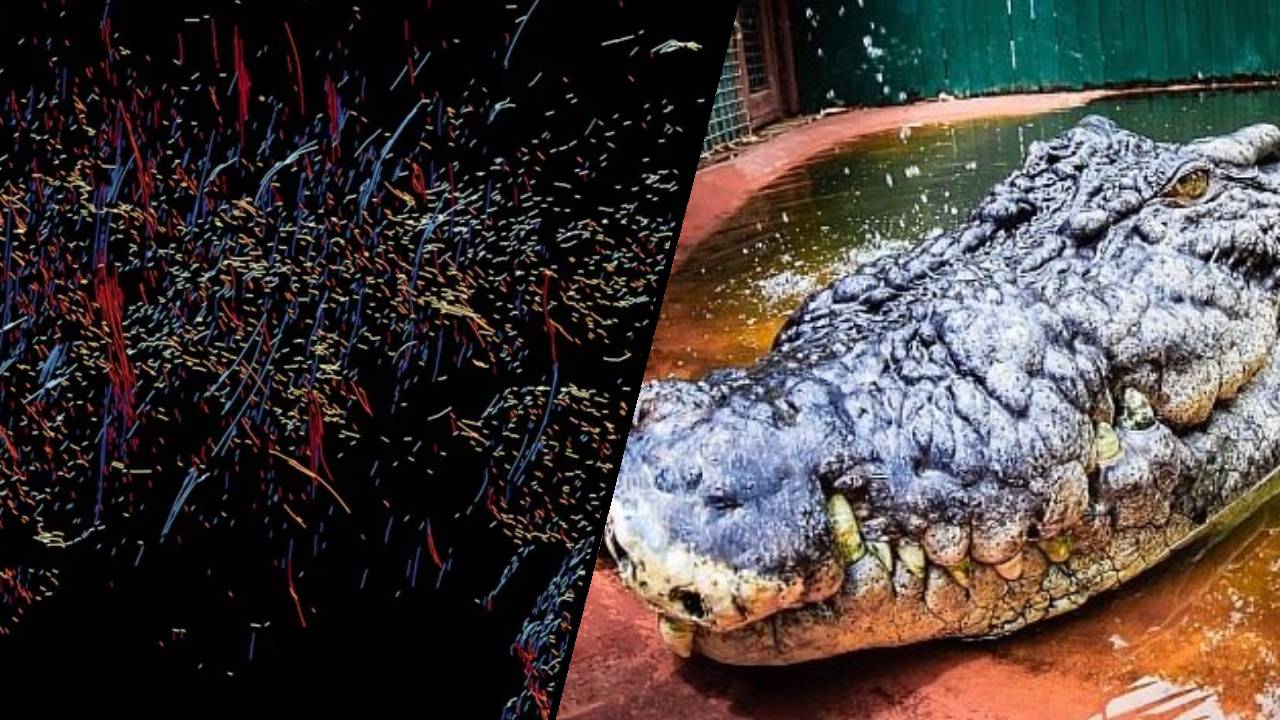Science news this week: Crocodile mysteries and spindles in space
June 10, 2023: Our weekly roundup of the latest science in the news, as well as a few fascinating articles to keep you entertained over the weekend.

We've gone cuckoo for crocodiles this week, with no less than five stories on the sizable snappers.
First, we reported on the orange crocs of Nepal, and then, on a man's incredible escape from the jaws of death, before we swiftly moved on to the first recorded case of a crocodile "virgin birth." Maybe the croc born of this miraculous conception could live to the ripe old age of Cassius, the world’s oldest crocodile, who turned (about) 120 years old this week.
Sadly, all is not positive news in the land of these giant reptiles. On Wednesday, we reported news of the suspected murder of a female croc named "Lizzie." It's the second such case in recent weeks of a butchered crocodile being discovered in the Australian state of Queensland, and the mystery of what, or who, killed the beautiful beasts is only deepening.
Don't be fooled into thinking that's it from the animal kingdom — there were plenty of other stories snapping at the crocodiles' heels, like the ones about ongoing battle between human and orca, Pablo Escobar's "cocaine hippos," and the ever-impressive octopus brain. Plus, there's the perhaps unsurprising news that primates have been masturbating for at least 40 million years.
Speaking of long-lived things, space is shedding light on some seriously ancient oddities, like the hundreds of thin, invisible structures emanating from our galaxy's supermassive black hole, and the long galactic "tail" near a doomed galaxy group.
Stepping away from cosmology to the core of our own planet, scientists have drilled into an underwater mountain to collect a record-breaking chunk of Earth's mantle that's more than 3,280 feet (1 kilometer) long. Meanwhile, in Siberia, a 650,000 year-old megaslump of permafrost known as the "gateway to the underworld" is revealing secrets about our planet's ancient climate.
There was, of course, so much more we covered in science news this week, so be sure to check our website regularly to stay updated, and follow us on Facebook, Twitter and Instagram. You can also sign up to our daily newsletter using the form below.
Get the world’s most fascinating discoveries delivered straight to your inbox.
Picture of the week

It might look like a scene from Blade Runner or another dystopian sci-fi, but this is actually the skyline of New York City on Wednesday (June 8), after wildfire smoke from Canada drifted over the city. With wildfires predicted to become more commonplace with climate change, could this alarming pollution be a sign of what's to come?
Weekend reading
- With water covering 70% of our planet, you’d have thought we'd have worked out by now how many oceans there are.
- While wildfire smoke and other harmful pollutants are top of mind, check out our pick of the best air purifiers and some of the top deals on them at the moment.
- If a cat kneads on your lap, it's likely because it feels safe around you. But why do they knead in the first place?
- Mathematicians have been spending decades to find the elusive "vampire einstein" shape — now they’ve finally done it.
- You might look back at your teenage years with a grimace, but do all animals go through adolescence?
- Not as big a bang as the one that kick-started the universe as we know it, but these massive volcanic eruptions throughout history really did pack a punch.
And finally…

Look up an hour or two after sunset or before sunrise over the next few months and you may see ethereal blue, silver or golden streaks in the Northern Hemisphere's northern skies. Called noctilucent clouds (meaning "night-shining" clouds in Latin), these strange-looking patterns in the sky are the highest, driest, coldest and rarest clouds on Earth.
If you want to see the clouds at their best, you'll need a good view, in the bottom 20 to 25 degrees of the northern horizon, as the stars begin to shine in late twilight. You don't need any fancy equipment to see them — they are easy enough to spot with the naked eye — but with a good pair of stargazing binoculars you'll get a fabulous close-up of one of the summer's most elusive and impressive sky sights.

Alexander McNamara is the Editor-in-Chief at Live Science, and has more than 15 years’ experience in publishing at digital titles. In 2024 he was shortlisted for Editor of the Year at the Association of British Science Writers awards for his work at Live Science. He has previously worked at New Scientist and BBC Science Focus.
 Live Science Plus
Live Science Plus





